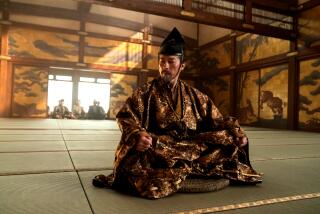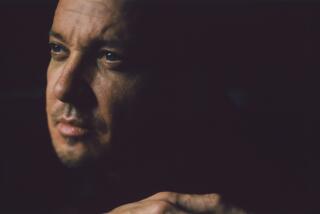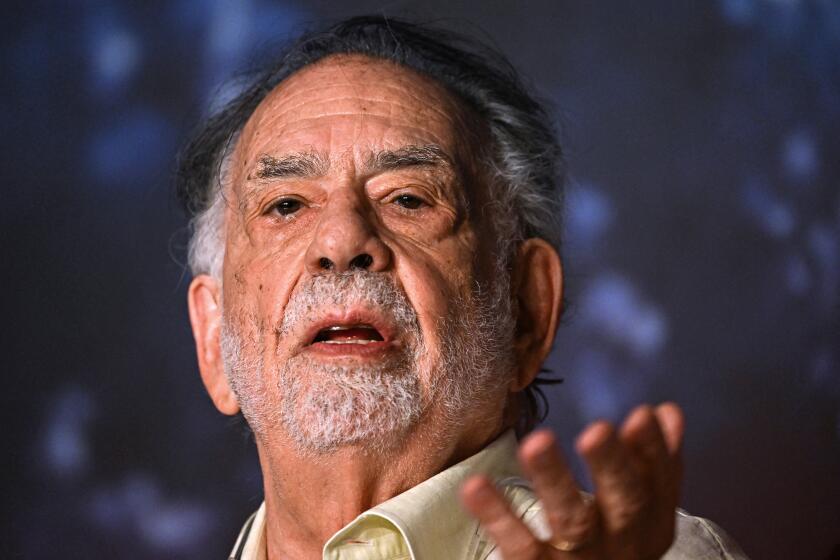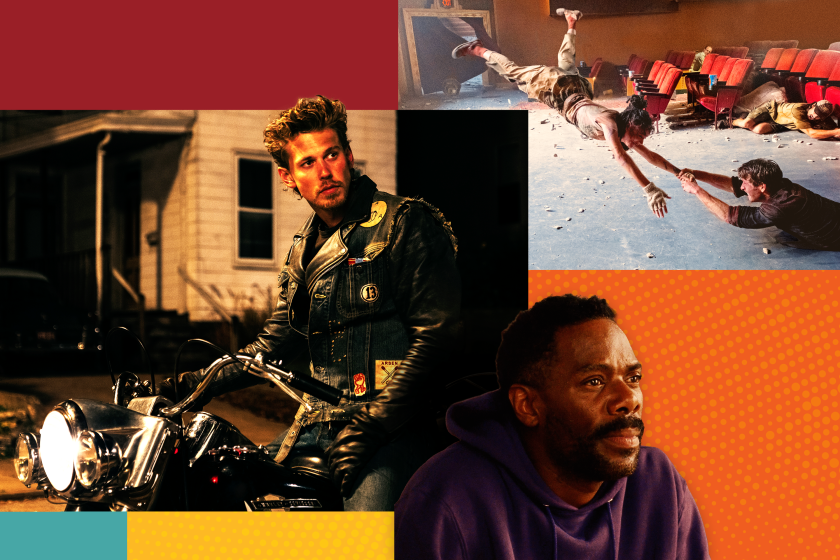Digital Cinema Gets a Push
Robert Zemeckis can’t wait for digital cinema to be complete.
Why should he? For more than 15 years, the popular director has melded live-action, visual effects, and, on occasion, animation into an imaginative art form with the “Back to the Future” trilogy, “Who Framed Roger Rabbit,” “Death Becomes Her,” “Forrest Gump,” “Contact,” “What Lies Beneath” and “Cast Away.”
So it should come as no surprise that Zemeckis is taking an active role in accelerating the pace and expanding the role of digital cinema. In effect, he’s going back to the future with the creation of a digital arts complex at the USC School of Cinema-Television, his alma mater.
Located in a 35,000-square-foot building that used to be a furniture warehouse adjacent to the campus, the Robert Zemeckis Center for Digital Arts, which just opened, will become an integral part of the university’s training of filmmakers and TV creators of the future.
As a result, students will now have greater access to cutting-edge digital tools, opening up a whole world of visual possibilities previously denied them because of time, cost and other mechanical limitations of film. Using computer-generated imagery, or CGI, they can move anywhere in a scene without restriction, the way Zemeckis careens in and out of the haunted house in “What Lies Beneath”; they can defy all rules of physical reality by contorting a face or a body, as the director did with Meryl Streep and Goldie Hawn in “Death Becomes Her”; or they can seamlessly morph actors in historical situations or wipe away their limbs, as he did in “Forrest Gump.”
Zemeckis not only donated $5 million, but also persuaded some of the most powerful people and entities in the industry to contribute. Fellow USC alumnus George Lucas donated $2 million for the construction of a digital studio named after Akira Kurosawa and an advanced media classroom named after William Wyler; honorary alumnus Steven Spielberg donated $2 million to fund both a digital studio in commemoration of Stanley Kubrick and another CGI classroom.
Other contributions include a multi-camera sound stage funded with $1 million by David Geffen, one of Spielberg’s partners at DreamWorks, and an undisclosed donation by Ron and Cheryl Howard for the creation of a multimedia screening room. The center also counts Avid Technology, 20th Century Fox, Universal Studios, Sony and Warner Bros. among its donors.
In addition, the center boasts nonlinear digital editing and shooting systems, stages with motion-control computers (courtesy of Universal), multimedia fiber-optic cable connections, a digital editing “bullpen” with 60 stations, suites for digital sound and picture editing and digital compositing equipment, not to mention more than 100 digital cameras donated by Sony. This will not only make shooting and editing easier and more precise, but will also allow students to simultaneously interact with one another throughout the facility.
“The thing that’s most amazing about what’s being done here is that it’s the first signal of what’s to come,” a wide-eyed Zemeckis explains while touring the facility and staring at the high ceilings, flexible walls and great expanse of the center. “Because of the fact that the real art [in the digital domain] is virtual, what you see here physically is going to look like a bank of monitors or a sound stage. That’s kind of like going into a lumberyard and looking at a pile of two-by-fours and saying this is a house. That’s what all this is. And that’s going to be the essence of movies, a hybrid of the real and the virtual.”
Zemeckis is philosophical--and extremely optimistic--about the ongoing digital revolution in movies, despite the fact that he still has one foot in analog and one in digital, which makes him self-conscious. When he looks at a digital watch, for instance, he still can’t help converting the image in his mind to an analog face. Or when he watches editors piecing together scenes on the Avid system, he imagines the same process with separate segments of film for sound and picture running slowly through a synchronizer while they’re way ahead of him in the electronic version of the process.
*
Most movies have been edited electronically on Avid consoles for years, but digital cinematography eliminates the need to transfer images captured on coded celluloid into computer files for editing. With digital, images are transferred directly from the camera storage device to the Avid. There’s no waiting for film to be shipped to the processor, developed, copied onto work prints and then fed into an optical reader that digitizes the images for editing. The images are already digitized.
“I have no idea how the computer software works for visual effects,” he adds. “I just tell them what I’m looking for. This is why this center is so important to move out of the technical and into the world of the artist who knows how to work the equipment. You see, what I think is going to happen is this huge revolution in capturing moving images, but ultimately it’s going to be about the story. Everyone is going to shrug at your images because there is no spectacle left. It’s all ‘Matrixed’ out. Anyway, I don’t see anything in features that is as good as anything I see in TV commercials. So audiences will have seen it all at home before you can dazzle them on the big screen.”
Nevertheless, as a result of advances in digital technology, Zemeckis has begun to experience more control in manipulating imagery and the speed with which you can make a movie.
“Creating moving images is now more than 100 years old,” Zemeckis notes. “And movies went from being a novelty to an entertainment. And then they were studied in universities. And they’ve always been playing catch-up. But now, for the first time, you have the reverse, where this digital center is a vision of what film school sees for the future.”
Elizabeth Monk Daley, dean of the USC School of Cinema-Television, believes the center could be a microcosm for the way studios function someday, given the fact that the facility is fiber-optically linked, and plugged not only into the university at large, but also certain segments of the industry (including Universal, DreamWorks, Industrial Light & Magic and Amblin) for remote collaborative editing.
“What we want to do is get rid of the term ‘special effects,’ ” Daley says. “They are digital effects; they are sound effects. They are our language.
“Even though we know this isn’t out there yet in the industry, the people with vision in the industry know it’s coming, and they know that the generation we have here now is going to make that happen. It’s better to put the tools in their hands, and everyone sees it as an investment in the future.”
And since this is the first digital center of its kind in the country, USC gains another advantage to offer students, in addition to its prestigious alumni connections throughout the film and television business.
Zemeckis looks around an editing lab full of students working on Avids and marvels at the activity. “This is way more visionary than anything that’s going on in any segment of the real industry. It’s like everyone thinks we’re still making movies out there. And no one really understands that this is like a freight train coming down the track. The guilds don’t understand it, the studios don’t understand it, the audiences don’t know what’s gonna hit ‘em. And this whole thing is gonna explode. What’s exciting is not only this facility, but the philosophy that went behind it. These are moving-image students--storytellers. But if they come in with this whole different idea that’s out of the box, they can flourish here.”
*
Not surprisingly, Lucas agrees. But then he’s been the most enthusiastic supporter of digital cinema for the last 20 years. He and his associates developed nonlinear digital editing for 10 years before selling the technology to Avid; he’s been a trail-blazing user of digital visual effects for ages and now digital projection; and he took advantage last year of a new hybrid camera manufactured by Sony and Panavision to digitally shoot his entire new “Star Wars” film, “Episode II,” to be released in 2002.
“I’m glad the school is ahead of the curve,” Lucas says by phone from Skywalker Ranch in Marin County. “I’ve been pushing them to go digital for a long time now. It’s an impressive facility that will help solve the problems of students. Digital is easier to use than film and a lot less costly. The art of cinema is the same. USC especially has always worked very hard not to stress technology. It’s more into pushing the art form. There will be no more restrictions. This will make it so much easier to learn the process.”
And Lucas has nothing but praise for the new digital camera that saved a week of shooting and millions of dollars. “It gave us a great look,” he adds. ‘It’s faster and it gave us the freedom and affordability to pretty much do what we wanted. I’m hopeful a few hundred theaters next year will be ready to show it digitally. It’s important that people see that it’s vastly superior to film. Manipulation is easier. We have software to re-create the look of any film. We can replicate almost any film stock. We have no problem retrieving the digital elements. The hard part is [physically] retrieving film. This 19th century idea of sprockets and film and projectors--it’s slow and costly. The photochemical process is so complicated and films get scratched and dirty and they degrade.
“The thing about digital, it is the medium of the masses. It’s infinitely more malleable than film, which is so arcane. The independents are embracing it and so will everyone else eventually. This is going forward with or without the industry.”
In the meantime, relatively few theaters are equipped with digital projection systems, and many have balked about the extra expense (up to $150,000 per auditorium). With the majority of the largest chains in the midst of bankruptcy and consolidation, it’s unlikely that they will convert quickly enough to satisfy Lucas.
Howard, who is not interested enough in digital cinema to become a guinea pig like Lucas, is nonetheless a supporter who appreciates its benefits. “The flexibility, the possibility of realizing a story’s full potential is wonderful,” Howard says by phone. He is prepping “A Beautiful Mind” with Russell Crowe and Ed Harris, which will utilize digital elements to express psychological ideas and show off landscapes.
“I haven’t used a digital camera yet,” Howard adds, “but I’m open to whatever makes movies a more memorable experience. Hats off to Bob Z. for stepping up in a significant way and getting everyone involved. There is no question that digital is here. It’s a question of how encompassing it becomes.” Peering over the shoulder of a technician demonstrating the color correction and rendering capabilities of the Quantell Domino system in the $500,000 visual effects studio (funded by animation filmmaker David Kirschner and his family), Zemeckis asks if the shot on the display is all-virtual.
“This is where you can do anything,” Zemeckis insists. “It renders pretty fast, almost in real time. All the students--the cinematographer, the editor, the art director--have to know how to operate this, because everything is blurred now.”
The director predicts that in the digital cinema of the future, actors will have to learn a whole new craft as well: wearing all sorts of wires and high-tech contraptions while moving around and blending in with the virtual surroundings. The first casualty will be stunt people.
“Actually, the key thing you’re going to need from actors is a vivid imagination. They are going to have to go completely into the void to find the performance because they’re not going to have the things like period cars on the streets and extras and the feel of whatever they need to get into their performances.
“For me, I view this as a more perfect tool. I guess I would love to come up with an idea where I could literally make a movie with someone sitting at a paint box [the Quantell] and having an actor come onto a green screen and build the movie in the sort of quiet din of this room. No compromises. Execution of your vision. It would be fun to be in a virtual environment if I could come up with a story that would be right for it.”
More to Read
The biggest entertainment stories
Get our big stories about Hollywood, film, television, music, arts, culture and more right in your inbox as soon as they publish.
You may occasionally receive promotional content from the Los Angeles Times.






